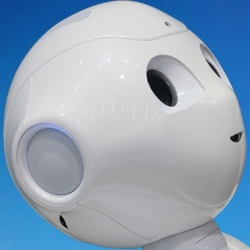
An editorial in the South China Morning Post by a think tank researcher and CEO of a marketing firm has supported the idea of taxing robots and businesses to offset AI driven job losses. Scott Cheng is a public affairs and communications consultant and a former public policy researcher with the One Country Two Systems Research Institute.
David Ketchum is founder and CEO of Current Asia and chairman of Digital + Direct Marketing Association Asia.
Their recommendation was to consider taxing a portion of the profit increases generated by decreased labor costs and other efficiencies. This was instead of imposing a tax on the use of AI and robots. They mentioned that Bill Gates had mentioned using a tax on robots to fund programs to offset the impact.
It seems that in order to be clear what is being taxed, then a government would need to have a tax or penalty for mass layoffs that were not the result of financial distress.
The problems would be avoiding creating a bureaucracy that just makes existing companies easier to displace by new companies using better technology.
Robots will probably not be the major source of unemployment. China is trying to get to ten million robots by 2025. The more likely sources of displacement will be technology that enables new business processes and models which do not need as many people.
It will either be easy to avoid the taxes or penalties or it will make existing companies even slower and even more vulnerable to new entrants who never employed that many people.
If Amazon uses more technology and kills Sears, JC Penny and other retailers. Then how are the taxes crafted where Amazon cannot avoid them or does not make the overall economy less efficient so that Alibaba or Tencent are not the companies that cause the job losses.
They summarized the studies of potential jobs losses in the PricewaterhouseCoopers study and Gartner studies. 30-40% jobs are at risk over the next two decades.
Wave 1: Algorithmic wave (to early 2020s)
Automation of simple computational tasks and analysis of structured data, affecting data-driven sectors such as financial services.
Wave 2: Augmentation wave (to late 2020s)
Dynamic interaction with technology for clerical support and decision making. Also includes robotic tasks in semicontrolled environments such as moving objects in warehouses.
Wave 3: Autonomous wave (to mid2030s)
Automation of physical labor and manual dexterity, and problem-solving in dynamic realworld situations that require responsive actions, such as in transport and construction.
